The respected members of the oncology community who are listed below passed away in 2019–2020. The ASCO Post remembers them, their lives, and their contributions to cancer research and treatment.
Clara D. Bloomfield, MD, FASCO
The acute myeloid leukemia (AML) community lost one of its shining lights with the death of Dr. Bloomfield on March 1, 2020, at age 77 years.
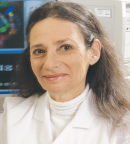
Clara D. Bloomfield, MD, FASCO
Dr. Bloomfield is well known for her more than 50 years of groundbreaking research in blood cancers, especially AML. She helped revolutionize treatment for people with AML by identifying diverse risk cohorts. She was considered by many to be the world’s authority on how chromosome changes influence treatment and outcome in AML.
Dr. Bloomfield was born on May 15, 1942, in New York. During World War II, her family moved to Washington, DC, and, after the war, moved again to Champaign-Urbana, Illinois, where her parents were faculty members at the University of Illinois.
Dr. Bloomfield began her studies at the University of Wisconsin in Madison but transferred to San Diego to be with her husband. She graduated from San Diego State College in 1964 summa cum laude in biology and went on to study medicine at the University of Chicago, graduating in 1968. Her postgraduate training in internal medicine and hematology was at the University of Minnesota, where she became the first woman to become a full Professor of Medicine in 1980. In 1989, she moved to Buffalo, where she became Professor of Medicine and Chief of the Division of Oncology at the State University of New York at Buffalo and Chair of the Division of Medicine at Roswell Park Cancer Institute.
In 1997, she moved to Columbus, Ohio, to assume the role of Director of the Division of Hematology-Oncology in the College of Medicine, advancing to become Director of The Ohio State University Comprehensive Cancer Center, where she was also a Distinguished University Professor, Senior Advisor, a member of the Molecular Biology and Cancer Genetics Program, Professor of Internal Medicine, and held an endowed Chair in Cancer Research.
Dr. Bloomfield authored many review articles and chapters in hematology textbooks and more than 600 peer-reviewed articles in major scientific journals. She frequently lectured at national and international meetings. She served on the Board of Directors of the American Association for Cancer Research (AACR) and ASCO and chaired the National Cancer Institute (NCI) Division of Cancer Treatment Board of Scientific Counselors. She was Chair of the NCI Progress Review Group, which is responsible for defining the national research agenda for leukemia, lymphoma, and myeloma. She was also a key member of the AML subcommittee of Cancer and Leukemia Group B (CALGB) for much of her professional career.
Dr. Bloomfield received many honors—too many to mention here—including membership in the Institute of Medicine of the National Academy of Sciences (now the National Academy of Medicine) and the American Academy of Arts and Sciences, as well as a Fellow of the AACR Academy.
She is survived by her husband of 36 years, Professor Albert de la Chapelle, a geneticist and professor at The Ohio State.
Stanley Cohen, PhD
Dr. Cohen, co-recipient of the 1986 Nobel Prize in Physiology or Medicine, died on February 5, 2020. The Nobel Laureate and Emeritus Professor of Biochemistry from Vanderbilt University was recognized for his discovery of epidermal growth factor (EGF) and its receptor. He shared the prize with Rita Levi-Montalcini, MD, a former colleague, who was recognized for her discovery of nerve growth factor.

Stanley Cohen, PhD
Dr. Cohen was born on November 17, 1922, in Brooklyn, the son of immigrants to the United States from Russia. Dr. Cohen attended Brooklyn College and received an undergraduate degree in chemistry and biology. He earned a master’s degree in zoology from Oberlin College in Ohio and a PhD degree in biochemistry from the University of Michigan, Ann Arbor.
In the mid-1950s, Dr. Cohen worked in the laboratory of Viktor Hamburger, MD, a pioneer in the study of nerve growth, at Washington University, St. Louis. Dr. Cohen identified EGF and recognized it stimulated epidermal growth. He later joined the faculty at Vanderbilt University and, in 1959, isolated EGF and characterized its receptor in collaboration with Graham Carpenter, PhD, Emeritus Professor of Biochemistry.
“Stanley was a unique person and an unbelievably focused yet creative scientist,” Dr. Carpenter said. “He taught me how to think about what was really important, yet within the realm of feasible. A great experimentalist, he made a real difference in science and medicine.”
Jeff Balser, MD, PhD, President and Chief Executive Officer for Vanderbilt University Medical Center and Dean of the Vanderbilt University School of Medicine, said: “Dr. Cohen’s discovery of the EGF receptor has revolutionized the care and outlook of millions of patients with cancer worldwide. His Nobel-winning discovery formed the foundation for an entirely new area of research and significantly expanded our understanding of multiple types of diseases.” He added: “Despite his enormous success, Dr. Cohen remained humble and was a generous mentor to generations of scientists who followed in his footsteps.”
Over the course of Dr. Cohen’s life, he was recognized with other major awards, including the Albert Lasker Basic Medical Research Award and, in 1986, the President’s National Medal of Science, which was presented by President Ronald Reagan. In 2016, Dr. Cohen was inducted into the Tennessee Healthcare Hall of Fame.
In addition to his wife, Jan Jorden, Dr. Cohen is survived by three children: Bert Bishop (Kay Bowen), Ken Larsen, and Cary Cohen (L’Don Sawyer); and two granddaughters, Lori Cohen and Tamara Larsen.
Bernard Fisher, MD
Dr. Fisher, who died on October 16, 2019, at the age of 101, will be remembered for many

Bernard Fisher, MD
accomplishments, including a paradigm shift that altered the scientific approach to breast cancer treatment. See pages 74–75 in this issue for a special tribute to this Past President of ASCO.
Eli J. Glatstein, MD, FASCO
Dr. Glatstein, the Morton M. Kligerman Professor of Radiation Oncology in the Perelman School of Medicine at the University of Pennsylvania, Philadelphia, died on November 27, 2019, at the age of 81. Although he was a radiation oncologist by training, he was best known as an outspoken champion of multidisciplinary treatment of cancer.
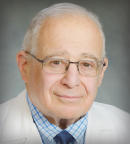
Eli J. Glatstein, MD, FASCO
Dr. Glatstein was born and reared in Muscatine, Iowa. From a young age, he was bound and determined to be a doctor. After graduating from high school, Dr. Glatstein earned his undergraduate degree with highest honors in general science from the State University of Iowa. He immediately went on to receive his MD from the Stanford University School of Medicine in 1964, followed by a medical internship in internal medicine at New York Hospital. Dr. Glatstein had originally decided to begin studying to be a pathologist. He applied to the pathology program, was accepted, and had planned to attend the Mallory Institute of Pathology in Boston, until he was drafted into the U.S. Army in 1964. He was awarded the Bronze Star for his efforts during active combat in the Vietnam War. After his tour of duty in Vietnam, Dr. Glatstein returned to Stanford University, enrolling in the general radiology program.
He left Stanford to become Head of the Radiation Oncology Branch at the NCI until an interest in particle therapy brought Dr. Glatstein to The University of Texas Southwestern Medical Center in Dallas, where he served as Professor and Chair of the Department of Radiation Oncology. He joined the Perelman School of Medicine at the University of Pennsylvania in 1996 as Professor and Vice Chairman of the Department of Radiation Oncology.
Dr. Glatstein’s work resulted in improved cure rates for patients with lymphoma, sarcoma, lung cancer, and a variety of other malignant diseases. In 2010, he received the ASCO’s Distinguished Achievement Award, which honors an individual who has proven to be an outstanding leader and mentor in the area of science, practice, or research in any subspecialty of oncology that has benefited ASCO members and/or their patients.
In a past interview, when asked how he’d like to be remembered, Dr. Glatstein responded with his well-known humility: “I’d like to be remembered as someone who said what he thought and said it honestly. I think I’ve tried to do that. Nobody is perfect, and that certainly includes me. But I think there are things that need to be said, and I’m perfectly willing to say them. I don’t have any illusions about perfection. I have feet of clay like everyone else.”
John Hansen, MD
The evolution of our understanding of transplant immunology is the result of laboratory and clinical researchers, one of whom was Dr. Hansen, whose work demonstrated how genetic variation in the immune system contributes to the success or failure of a bone marrow transplant and defined immunologic rules for finding suitable transplant donors. Dr. Hansen died of pancreatic cancer on July 31, 2019. He was 76.

John Hansen, MD
Dr. Hansen was born on May 1, 1943, in Minneapolis. He graduated from the University of Minnesota with an undergraduate degree in biology and earned his medical degree at Stanford University School of Medicine. Dr. Hansen had originally planned to specialize in cardiac surgery and had the opportunity during medical school to work in the laboratory of health-transplant pioneer Norman Shumway. However, during this period, he observed that Dr. Shumway’s team was facing a persistent obstacle: immunologic rejection of the transplanted heart.
At the time, Dr. Hansen was set to undertake a cardiac surgery fellowship at Stanford University, but he postponed the fellowship and took advantage of an opportunity in London to learn immunology to tackle the rejection issue. He returned to the University of Minnesota to switch specialties and instead study immunology.
Dr. Hansen’s career blossomed at Fred Hutchinson Cancer Research Center (Fred Hutch) in Seattle. He joined the Center in 1977, and, as his research gathered momentum, Dr. Hansen would become Head of the Clinical Tissue-Typing Lab at Fred Hutch’s transplant program. He was also appointed Senior Vice President and Director of the Clinical Research Division and Head of the Human Immunogenetics Program and assumed the directorship of the Clinical Immunogenetics Laboratory at Seattle Cancer Care Alliance.
At Fred Hutch, Dr. Hansen’s tissue-typing laboratory also made possible the first transplant for leukemia with an unrelated donor in 1979. Dr. Hansen led the three-person team that organized and launched the National Marrow Donor Program (NMDP) registry to facilitate donor matches between strangers. He served on the NMDP’s Board of Directors from 1988 to 2004.
His associates and many friends at Fred Hutch remembered Dr. Hansen as a quiet man, one who listened more than he talked. Colleagues who worked with him for decades cannot remember ever hearing him raise his voice in anger. Always steady and systematic in his science, colleagues noted Dr. Hansen was also capable of great bounds of creativity.
In a 2018 Fred Hutch profile, Dr. Hansen noted the potential for transplantation to save lives from incurable diseases was so important to him that sometimes he worked throughout the night. “It was so novel and exciting in what it meant for big breakthroughs for patients,” he said.
Dr. Hansen’s first wife, Mary Ann (Wilson) Hansen, died of cancer in the early 1990s. He is survived by three children from that marriage, Eric and Peter Hansen and Connie Jenson; a son, Nicholas, from his marriage to Suzanne Gobeille; and seven grandchildren.
Linda L. Hogan
Ms. Hogan died on August 30, 2019, following a 25-year history of living with breast cancer and a more recent diagnosis of advanced lung cancer. Many in the oncology community knew and interacted with Ms. Hogan in her work with the cooperative groups and the National Cancer Institute. In 1991, Ms. Hogan opened a national clinical trials consulting practice and worked with community hospitals nationwide to develop and enhance cancer and HIV/AIDS clinical trial research programs.

Linda L. Hogan
Linda Hogan was born on November 29, 1946, in Farmington, Maine. She was the only child of Eleanor Sidell (Hogan) Stevens of Madison/Waterville, Maine, and John W. Hogan, Jr, of Park City, Kentucky.
Ms. Hogan received a bachelor’s degree in psychology from Gordon College in Wenham, Massachusetts, in 1969 and a master’s degree in social work from Boston College in 1971.
Ms. Hogan worked in both geriatric social work and oncology social work before becoming an administrator for various cancer research organizations. She managed cancer research organizations at the Dana-Farber Cancer Institute/Harvard and Dartmouth Medical School and spent 5 years as Manager of the Protocol and Information Office at the National Cancer Institute and National Institutes of Health in Bethesda, Maryland. Ms. Hogan later returned to New England as Administrative Director of the Statistical and Data Analysis Center for AIDS research at the Harvard School of Public Health, Boston.
In her earlier years in Massachusetts, she served on the Board of the American Cancer Society of Elder Services and was a founder of one of the first community Hospice Programs in Massachusetts.
Ariel Hollinshead Hyun, PhD
The late Dr. Hollinshead’s seminal work in identifying tumor antigens has led to groundbreaking research in cancer vaccines and immunotherapy. Dr. Hollinshead died on September 10, 2019, at the age of 90.
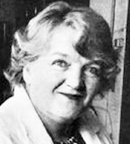
Ariel Hollinshead Hyun, PhD
Dr. Hollinshead was born Ariel Cahill on August 24, 1929, in Bethel Park, Pennsylvania. After graduating from high school, she matriculated to Swarthmore College before transferring to Ohio University to earn her undergraduate degree. She then went to George Washington University to complete her master’s and doctoral degrees in pharmacology in 1951. She completed her postdoctoral work in virology and epidemiology at Baylor University Medical Center.
Dr. Hollinshead’s early research focused on oncovirology, and her first experiments used bits of oncoviruses to determine whether they could produce an immune response in animals. During these experiments, she used fragments from tumors caused by the virus as scientific controls and was surprised to learn the membrane fragments provoked a stronger immune response. Due to skepticism over her findings, she went without research money or a salary for more than 8 months until she found a collaborator at the Ohio State University School of Veterinary Medicine.
Dr. Hollingshead eventually validated her studies and invented methods to isolate the immune-inducing element from the tumor membrane fragments, which led to clinical trials in the 1970s. In the early 1980s, she began following the same process to identify and test tumor antigens from women with ovarian cancer. When the AIDS epidemic took hold across the country, Dr. Hollinshead returned to her virology roots and joined the effort to develop an HIV vaccine.
Dr. Hollinshead published more than 275 research articles and directed 17 clinical trials, involving some 19 types of human cancers. Her contributions to her field included roles in the discovery of purine and pyrimidine analogs and early work on poliomyelitis, and she was one of the first to develop and test antibodies to various cancer neoantigens.
Dr. Hollinshead was named Medical Woman of the Year in 1976 by the Joint Board of American Medical Colleges and was a member of several professional societies, including ASCO, the American Association for Cancer Research, and the American Association for the Advancement of Science. Dr. Hollinshead was the recipient of numerous awards and, in 1980, was honored at the White House by President Jimmy Carter.
Family and colleagues recall Dr. Hollinshead as a serious and dedicated scientist, but one who loved to sing and play the piano. She was an active member of community choirs, singing mezzo-soprano into her late 80s. She often spent weekends with family and friends in Harpers Ferry, West Virginia, where she painted scenic views. Dr. Hollinshead was a devout Quaker and an advocate for the advancement of women in science. She is survived by her two sons, William and Christopher Hyun, a daughter-in-law, Maria Pallante, and three grandchildren, Stephanie, Isabella, and Spenser Hyun. Her husband of nearly 60 years, Montgomery Hyun, died in 2016.
LaSalle D. Leffall, Jr, MD
Overcoming the barriers presented by growing up in the segregated South, Dr. Leffall was a nationally regarded oncologic surgeon who opened doors for others in the medical profession. His career was distinguished by “firsts”: the first African American President of both the American Cancer Society and the American College of Surgeons. Dr. Leffall died on May 25, 2019. He was 89.

LaSalle D. Leffall, Jr, MD
Dr. Leffall was born on May 22, 1930, in Tallahassee, Florida, and reared in nearby Quincy. Having started school at 5 years old and skipping a grade, Dr. Leffall graduated high school and set off to college at the age of 15. His road to medicine was paved by two circumstances: His godmother’s husband, who was the only black physician in Quincy, would tell Dr. Leffall fascinating anecdotes from the “great profession of doctoring,” and even more influential was an after-school event when he was 9.
“I found a little bird with a wounded leg outside the school and took it home. I made a splint out of ice-cream sticks and nursed the bird back to health. I cured the bird, and that experience, more than anything else, influenced my decision to become a doctor, so I could cure sick people,” said Dr. Leffall in a past interview.
Dr. Leffall entered the historically black Florida A&M University, graduating summa cum laude in 1948 at the age of 18. With help from the university’s president, Dr. Leffall was accepted to Howard University College of Medicine—one of only two medical schools in the South that accepted black students. He received his MD from Howard in 1952, graduating first in his class. Dr. Leffall completed an internship at Homer G. Philips Hospital in St. Louis in 1953 and then did his surgical residency at both Freedmen’s Hospital and DC General Hospital in Washington, DC.
In 1957, Dr. Leffall was accepted for a surgical oncology fellowship at Memorial Sloan Kettering Cancer Center (MSK) in New York. After completing his surgical fellowship, Dr. Leffall entered the military at the rank of captain, MC, serving as Chief of General Surgery at the U.S. Army Hospital in Munich from 1960 to 1961. After receiving an honorable discharge from the military with the rank of major, Dr. Leffall joined the faculty of Howard University College of Medicine in 1962. He would soon become the University’s Chairman of the Department of Surgery, a position he held until his retirement.
Dr. Leffall received 14 honorary degrees from American universities and was named the first Charles R. Drew Professor in 1992 at Howard University. The LaSalle D. Leffall, Jr. Surgical Society was formed in 1995, and the Leffall Chair in Surgery was established in 1996.
Dr. Leffall was an avid tennis player and jazz enthusiast, admired by all who knew him for his gracious and dignified comportment and his grace under pressure. In 1956, he married Ruth Williams, who survives him along with his son, LaSalle III.
Donald A.B. Lindberg, MD
Noted pathologist Dr. Lindberg—who pioneered the application of computer technology to health care—was appointed Director of the National Library of Medicine in 1984, guiding the library for 30 years during its most robust period of development as a repository for scientific data. Dr. Lindberg died on August 16, 2019, following a fall. He was 85.
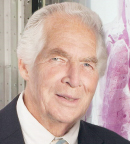
Donald A.B. Lindberg, MD
Dr. Lindberg was born and raised in Brooklyn and attended Poly Prep County Country Day School. In 1954, he graduated from Amherst College magna cum laude, with a degree in applied mathematics. In 1958, he earned a medical degree at Columbia University.
Although Dr. Lindberg was trained as a pathologist, he reinvented his career in 1960 when he joined the University of Missouri and began pioneering the application of computer technology to health care. As his research and vision matured, he realized computers would become increasingly useful in biomedical research and patient care.
In 1984, Dr. Lindberg was appointed Director of the National Library of Medicine, where he predicated his mission on the learned assumption that computers would become increasingly useful in research and clinical care. According to his colleagues, Dr. Lindberg was also a consummate planner. Current National Library of Medicine Director Patricia Flatley Brennan, RN, PhD, and National Institutes of Health Director Francis S. Collins, MD, PhD, remarked: “Don took a long view by developing long-range plans for [the National Library of Medicine] that helped him deliver on his predictions. Under his leadership, the National Library of Medicine embraced the Internet, enabling the public, health providers, and scientists to gain new or improved access to medical literature via PubMed and PubMed Central; clinical trials and their results via ClinicalTrials.gov; and consumer health information via MedlinePlus.”
Drs. Collins and Brennan recalled Dr. Lindberg as a man with a “wry sense of humor” and as “a civil servant who was committed to excellence, transparency, integrity, and public trust.”
Dr. Lindberg was elected the first President of the American Medical Informatics Association. He was also a founding member of the Health on the Net Foundation, an international organization devoted to guiding patients and providers to reliable health information. As the country’s “senior statesman for medicine and computers,” he has been called upon to serve on many boards, including the Computer Science and Engineering Board of the National Academy of Sciences, the National Board of Medical Examiners, and the Council of the Institute of Medicine of the National Academy of Sciences.
Dr. Lindberg was the author of three books and several book chapters, as well as more than 200 articles and reports.
He is survived by his wife, Mary Musick Lindberg; a brother, Charles Frank Lindberg; sons, Donald Allen Bror Lindberg II and Jonathan Edward Moyer Lindberg; daughters-in law, Amy Leigh Frank Lindberg and Kelly McGee Lindberg; and grandchildren, Frances Marie Musick Lindberg and Christopher Martin Jurgen Lindberg.
Henry T. Lynch, MD, PhD
Dr. Lynch, widely known as “the father of cancer genetics,” was born in Lawrence, Massachusetts, on January 4, 1928. He was reared in a poor neighborhood in metropolitan New York. When he was 16 years old, he dropped out of high school and, using a falsified birth certificate, joined the U.S. Navy, serving as a gunner on a marine ship in the Pacific during World War II.

Henry T. Lynch, MD, PhD
Following the war, Dr. Lynch had a stint as a professional boxer. A towering 6-foot 5-inch heavyweight, he fought in New York and the San Francisco Bay area under the ring name of “Hammerin’ Hank.” After retiring from boxing, he obtained his high-school equivalency diploma and attended the University of Oklahoma as an undergraduate, where he studied psychology, genetics, and medicine.
In 1952, Dr. Lynch relocated to the University of Denver to obtain his master’s degree in clinical psychology. In 1953, he began a PhD at the University of Texas, Austin, majoring in human genetics and earned a medical degree from The University of Texas in Galveston in 1960. In 1967, after various positions in other parts of the country, he joined the faculty of Creighton University School of Medicine, Omaha, where he remained throughout his career.
Dr. Lynch began studying the hereditary causes of colon cancer in the 1960s. He and his team focused on the diverse hereditary diseases recorded in the state of Nebraska and determined their geographic concentration through epidemiologic maps.
Dr. Lynch was fond of telling a story from his initial days of genetic investigation. “I had a patient who was an alcoholic and was convinced he would die of colon cancer because so many people in his family did. He told me that fear of cancer was one of the reasons he drank so much,” said Dr. Lynch. Postulating there was indeed a genetic link, Dr. Lynch decided to investigate and discovered the heritability of colon cancer risk. However, Dr. Lynch’s theory of familial colon cancer connection did not gain widespread acceptance until the identification of the first cancer genes in the 1990s. After this, his collection of family histories would become vital to the molecular work on the genetics of cancer, most notably the eponymous Lynch syndrome.
Dr. Lynch would go on to establish the cardinal principles of cancer genetics: early onset of disease, specific patterns of multiple primary cancers, and Mendelian patterns of inheritance in extended families.
Colleagues remembered Dr. Lynch as a tireless researcher and patient advocate who counseled families with a high incidence of cancer, emphasizing that early detection of the disease could save their lives. Even into his 80s, Dr. Lynch took phone calls from patients around the world, often reporting to work at 3:30 AM, so he could have an extended day of research.
Jane Smith, who was Dr. Lynch’s wife of 60 years, died in 2012. Dr. Lynch is survived by 3 children, 2 brothers, 10 grandchildren, and 9 great-grandchildren.
Paul G. Marks, MD
In 1980, Paul G. Marks, MD, became President and Chief Executive Officer of Memorial Sloan Kettering Cancer Center (MSK), the oldest and largest private cancer center in the world. Over his 19-year tenure, he is credited with setting MSK on a more scientific course by encouraging innovative research and recruiting a wave of highly talented new investigators. Dr. Marks also directed the restructuring and expansion of MSK, which included the milestone unification with Memorial Hospital. Dr. Marks died on April 28, 2020. He was 93.
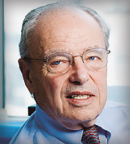
Paul G. Marks, MD
Dr. Marks was born on August 16, 1926, in Ashland, a small economically depressed coal town in Schuylkill County, Pennsylvania. When he was 5 years old, his mother died. Dr. Marks eventually relocated to the Brooklyn neighborhood of Bensonhurst, where he lived with his grandparents and attended public school. During high school, Dr. Marks excelled in science, catching the eye of a teacher who took the bright young student under his wing. He encouraged Dr. Marks to go to medical school and pursue a profession where he could make a difference in the world.
After graduating high school in 1942 at the top of his class, Dr. Marks entered Columbia University determined to become a doctor. But it was 1943 and WWII raged, so he applied for and was accepted into a naval officer training program. In October 1945, the war ended, and Dr. Marks received his undergraduate and medical degrees from Columbia, mostly financed by the GI Bill of Rights. Dr. Marks credited his college roommate, Josh Lederberg, a future Nobel Laureate, with sparking his interest in research. However, his 2-year research internship was interrupted by the Korean War, and, once again, the military needed soldiers. The military was also recruiting for the new National Institutes of Health (NIH) Clinical Center Research Training Program, where Dr. Marks applied for work, and so his research career was started.
After finishing his research stint at NIH, Dr. Marks returned to Columbia University in 1955, working in the laboratory of Nobel Laureate Jacques Monod. Over Dr. Marks’ research career, he led the discovery, testing, and approval of SAHA (suberoylanilide hydroxamic acid), the treatment of cutaneous T-cell lymphoma. His work helped to define the genetic basis for the differentiation of cells, particularly the way blood cells can become cancerous. Dr. Marks also played a pivotal role in the development of a pioneering approach to treating cancer, called cytodifferentiation, in which abnormal cells are coaxed into becoming normal again. That research in turn led to the development of histone deacetylase inhibitors such as vorinostat in the treatment of lymphoma.
In 1970, Dr. Marks was asked to become Dean of the Columbia University College of Physicians and Surgeons. Although ambivalent about taking on a large administrative position, Dr. Marks agreed. On his first day, he famously submitted his letter of resignation effective 3 years later. Over those 3 years, he spearheaded the fundraising effort that resulted in the Hammer Building. He also recruited some of the University’s most distinguished faculty, including University Professor Eric R. Kandel, who would go on to win a Nobel Prize.
During his tenure as Dean, Dr. Marks also served on President Nixon’s Cancer Panel, which was charged with developing cancer programs on national and school levels.
In 1979, Dr. Marks received a career-defining telephone call from Laurance Rockefeller, Chairman of the Board at MSK, offering Dr. Marks a position as the Center’s President. He accepted, and his visionary efforts over the next 2 decades transformed MSK into the world-renowned comprehensive cancer center it is today. Dr. Marks leaves behind an indelible footprint of excellence in science and cancer care.
Over his distinguished career, Dr. Marks was a member of the National Academy of Sciences, the National Academy of Medicine, the American Philosophical Society, and a Fellow of the American Academy of Arts and Sciences. To honor his contributions to science, President George H.W. Bush awarded Dr. Marks the National Medal of Science in 1991. He also published more than 350 scientific articles in various scholarly journals and served as Editor-in-Chief of the Journal of Clinical Investigation.
Dr. Marks is survived by his wife of more than 60 years, Joan; his sons, Andrew and Matthew; his daughter, Elizabeth; six grandchildren; two great-grandchildren; and a half brother, Laurence.
Augustine L. Perrotta, DO
On November 24, 2019, hematologist/oncologist Dr. Perrotta died, days before his 81st birthday. Dr. Perrotta died of renal cell carcinoma, presenting with metastasis to the spine, a topic about which he had written and lectured extensively. Dr. Perrotta was Clinical Professor of Medicine at Michigan State University College of Osteopathic Medicine, Chairman of the Department of Medicine, and Chief of the Section of Hematology/Oncology at Henry Ford Hospital in Warren, Michigan, for 10 years prior to his retirement.
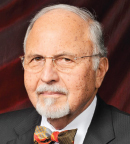
Augustine L. Perrotta, DO
Dr. Perrotta was the first fellowship-trained hematologist in the osteopathic medical profession, under the direction of Clement A. Finch, MD,at the University of Washington School of Medicine in Seattle. Anticipating the blending of the subspecialties of hematology and medical oncology, he was awarded a fellowship in medical oncology at the Memorial Sloan Kettering Cancer Center in New York, under the direction of Irwin Krakoff, MD.
A graduate with honors from the Chicago College of Osteopathic Medicine, Dr. Perrotta served a rotating internship at Detroit Osteopathic Hospital and an internal medicine residency at Oklahoma Osteopathic Hospital in Tulsa.
Dr. Perrotta was an author, coauthor, or senior author of 50 abstracts, articles in peer-reviewed journals, and a chapter in 2 editions of Foundations of Osteopathic Medicine. His retirement project was the publication of 15 medically oriented short stories, entitled A View From the Inside. The nonfiction book is about the public and private personalities and characters he had encountered in his personal and professional life and his connection to them. It was written for a general audience and included, among others, Babe Ruth; Ezzard Charles; John J. Bonica, MD; E. Donnall Thomas, MD; and Andrea Bocelli.
Stanley L. Schrier, MD
Dr. Schrier, Past President of the American Society of Hematology (ASH, 2004–2005) and Professor Emeritus of Hematology at Stanford Medicine in Palo Alto, died on August 16. He was 90 years old.
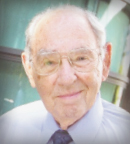
Stanley L. Schrier, MD
Dr. Schrier was a 1954 graduate of Johns Hopkins University School of Medicine in Baltimore, where he remained for his internship. Following this, Dr. Schrier completed further clinical training at the University of Michigan, Ann Arbor, and the University of Chicago. He started his career at Stanford University in 1959, where he became one of four members of the Division of Hematology and among about 12 to 15 members of the Division of Medicine.
By 1968, Dr. Schrier was Division Chief at Stanford, a position he held until 1995. The division matured greatly during his tenure as Chief, a period during which he also pursued his own clinical and research interests in hematology, with a focus on thalassemia and other red blood cell disorders.
Following his retirement, Dr. Schrier assumed an emeritus faculty position and remained an active part of the Division of Medicine, Department of Hematology. He continued seeing patients in the hematology clinic up until July 2019, interviewed applicants for residencies and fellowships, and had an ongoing teaching and mentoring role for countless residents and fellows.
“Dr. Schrier’s contributions to the field of hematology and to Stanford Medicine are immeasurable,” said Lloyd Minor, MD, Dean of the School of Medicine. “Not only was he instrumental in developing Stanford Medicine’s Hematology Division, but he also served as a trusted physician, innovative researcher, and committed mentor. We will miss Dr. Schrier’s unique and contagious passion that inspired so many.”
Jason Gotlieb, MD, Professor of Medicine at Stanford, said of Dr. Schrier: “He liked to sit down with his patients, not stand, and maintain eye contact, maybe hold their hands. He taught us that it’s okay to shed a tear as long as you show you’re going to be there with your patient through his journey.” Dr. Gotlieb added: “We can sustain his legacy by nurturing what he imbued in all of us—excellence in patient care, teaching, and scholarship.”
At the time of his death, Dr. Schrier was still funded by the National Institutes of Health as part of a consortium to investigate anemia in the elderly.
Dr. Schrier is predeceased by his first wife, Peggy Schrier, who died in 2001. He is survived by their children, a son, David, and two daughters, Rachel and Leslie. Dr. Schrier is also survived by his second wife, Barbara Klein, and their grandchildren.
Lawrence J. Solin, MD, FACR, FASTRO
Dr. Solin, a champion of breast-conserving therapy for women with breast cancer, died unexpectedly on March 3, 2020, at the age of 66. At the time of his death, Dr. Solin was Professor Emeritus in the Department of Radiation Oncology, Perelman School of Medicine, University of Pennsylvania, Philadelphia.

Lawrence J. Solin, MD, FACR, FASTRO
Dr. Solin was known by his peers as never one to be shy about his opinions regarding health care. He was also known as a tireless clinician and valuable mentor for young physicians at the beginning of their oncologic journey. Dr. Solin received international recognition for his research on the use of definitive radiation therapy after breast conservation treatment for women with early-stage breast cancer. His research efforts largely focused on the use of breast conservation treatment for ductal carcinoma in situ and long-term outcomes after breast conservation treatment for ductal carcinoma in situ and invasive carcinoma. These studies have helped shape treatment protocols for newly diagnosed patients with breast cancer.
Dr. Solin graduated from Brown University’s Alpert Medical School in 1978. His long and significant career spanned Eastern Cooperative Oncology Group–American College of Radiology Imaging Network (ECOG-ACRIN) member institutions, from Fox Chase (fellowship and early staff appointment) to the University of Pennsylvania (mid-career professorship) to Einstein Hospital, where he served as Department Chair in Radiation Oncology.
Colleague and friend Peter J. O’Dwyer, MD, shared his thoughts on Dr. Solin: “In all of his roles, Larry was foremost a colleague to whom one could bring clinical questions for a considered and expert opinion. He was especially driven by data and based his opinions, where possible, on evidence, not conjecture. For breast cancer, he played a career-long role in defining the evidence on the role of radiation therapy to increase cure rates.”
Dr. Solin was a frequent national and international lecturer, with more than 230 invited lectures. He contributed more than 190 peer-reviewed publications to the medical literature and served on multiple journal editorial boards. He served as Radiation Oncology Co-Chair of the Breast Committee for ECOG-ACRIN and also was a co-editor of the book, Breast Cancer Management and Molecular Medicine: Towards Tailored Approaches.
In pursuing these goals, Dr. Solin was remembered as a source of wisdom and experience on the ECOG-ACRIN Breast Committee. Former Chair Kathy Miller, MD, described him thus: “When I was Chair, I could count on Larry to be one of the seasoned voices from the back of the room at just the right time! But Larry’s role was not limited to providing wisdom and perspective; he was enthusiastic, energetic, committed, and motivating for those fortunate enough to work with him. Socially, he was gracious and warm.”
Survived by his wife, Leslie, and daughters, Jennifer and Elizabeth, Dr. Solin was delighted with the recent arrival of his granddaughter.
Rosemary Yancik, PhD
Medical sociologist Rosemary Yancik, PhD, was best known for her talent of bringing a group of experts together who shared her interests in improving the prevention and management of cancer in elderly patients. She served many years at the National Institutes of Health in both the National Institute on Aging and the National Cancer Institute (NCI). Dr. Yancik died on April 13, 2020, in Westtown, Pennsylvania. She was 86.
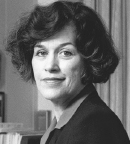
Rosemary Yancik, PhD
While at the NCI, Dr. Yancik organized meetings of experts interested in research into how the elderly might benefit in the areas of prevention, early detection, and treatment. From those meetings came the first of two books addressing these topics and titled Perspectives on Prevention and Treatment of Cancer in the Elderly.
Dr. Yancik was instrumental in the formation of the International Society of Geriatric Oncology (SIOG) in 2000. She received the Paul Calabresi Award from SIOG in 2004. At a time when the international community recognized the increased incidence of cancer in the elderly and clinicians appreciated more morbidity and mortality with treatment of the elderly, there was little support for systematic research into the cause of these problems. Fifty years ago, clinical trials often precluded admission of elderly patients, and studies addressing the elderly alone were nonexistent in the United States. Among her personal research contributions was the sentinel observation that there was a direct correlation between age and stage of disease in ovarian cancer.
Dr. Yancik was a tenacious quantitative investigator, but her real talent was in scientific administration. She identified both the interested neophytes and the experienced experts to foster an exchange of ideas in geriatric cancer research. This stimulated new programmatic interest from major cancer and geriatric organizations. While at the NCI, Dr. Yancik was the major organizer for a consensus conference addressing the topic and wrote and secured approval and funding for research focused on cancer and the elderly. Throughout her subsequent career at the National Institute on Aging, she was a recognized champion of geriatric cancer research.
Dr. Yancik was born on October 23, 1934, in Joliet, Illinois. She earned her PhD in Medical Sociology from St. Louis University and later lived in Fairfax and McLean, Virginia.
She is survived by her husband of 64 years, Joseph John Yancik, and her daughters, Geri Anne Yancik McCafferty and Ellen Marie Yancik Finnerty, and four grandchildren. She is also survived by her brother, Richard Panish, MD.
John W. Yarbro, MD, PhD
Most who leave a mark in life are noted for a single contribution; few are remembered for the breadth of their contributions. Such a man was John W. Yarbro, MD, PhD, who, near the end of his rich life, stepped foot on Antarctica, completing his desire to have visited all of the world’s seven continents. Dr. Yarbro died on April 13, 2020, at the age of 88.

John W. Yarbro, MD, PhD
Dr. Yarbro was born on September 15, 1931, in Louisville, Kentucky. After graduating high school, Dr. Yarbro entered the University of Louisville, where he received a bachelor’s degree with high honors in chemistry and then earned his MD. After medical school, Dr. Yarbro entered the U.S. Army Medical Corps, interned at Tripler Army Hospital, and served with the 25th Division, Schofield Barracks. He trained in internal medicine at the University of Minnesota, where he also received a PhD for research in nucleic acids.
His wife of 40 years, Connie Yarbro, was an oncology nurse who was co-founder of the Oncology Nursing Society. “John and I met while I was on the board of the Association of Community Cancer Centers, of which John was serving as President. After that, we sort of become an oncology team. John was one of the leaders in launching Seminars in Oncology and served as editor for 34 years. One day, I told him oncology nurses needed a journal like that. He told me to write a proposal and send it to the publisher. I did, and that was the beginning of Seminars in Oncology Nursing,” said Ms. Yarbro in an interview with The ASCO Post.
According to Ms. Yarbro, her life with Dr. Yarbro centered around oncology, whether it was teaching, traveling to meetings, or editing journals. She noted that Dr. Yarbro was, among other leadership roles, founding Director of the Department of Medical Oncology at the American Oncologic Hospital (now the Fox Chase Cancer Center); Associate Director of the National Cancer Institute, where he was in charge of the National Cancer Centers Program; Director of the Missouri Cancer Program; Director of the Regional Cancer Center, Memorial Medical Center in Springfield, Illinois; President of the Association of Community Cancer Centers; and Secretary-Treasurer of ASCO. Dr. Yarbro also chaired numerous national committees to include the Panel of Hematologic and Neoplastic Diseases of the U.S. Pharmacopeia; and was instrumental in launching the Journal of Clinical Oncology.
Past ASCO President, Richard L. Schilsky, MD, FACP, FASCT, FASCO, offered a memory of his friend and colleague: “I first met John when I joined the faculty of the University of Missouri-Columbia in 1981, after completing my fellowship at the National Cancer Institute (NCI). Our Division Chief was Patrick Henry, a genteel southerner who had himself spent time at NCI earlier in his career. John was clearly the intellectual force of our Division of seven faculty, and he took me under his wing. He had a keen interest in science, specifically biochemistry and DNA synthesis. He was a wonderful mentor who took a deep interest in my work, offered critiques, challenged conclusions, and helped me become a better scientist. He was also a shrewd administrator, with a keen understanding of local and national ‘oncopolitics,’ and his insights and advice helped me navigate some of the challenges we faced at our institution during those years as well as later in my career. And, he was a fabulous editor with a clear vision for where the science of oncology was heading and how new biologic insights could be applied to improve cancer care.
Dr. Yarbro is survived by his wife, Connie; grandson, Paul, and his wife, Pamela; great-grandchildren, Francys and Leonardo; and his dog, Tzu Hsi.

